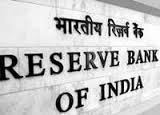Markets expect RBI to cut interest rates
With the government clamouring for a rate cut a majority of market participants expect a policy rate (Repo) cut of 25 basis points by the Reserve Bank of India (RBI) at its forthcoming monetary policy on Tuesday.
“Our expectation is that there is likely to be a rate cut of 25 basis points,” said Vinay Khattar, Senior Vice President & Head of Research, Edelweiss Financial Services. Several officials including Finance Minister Arun Jaitley and the Chief Economic Advisor Arvind Subramanian have been pitching for a rate cut. They have cited low inflation, and control on the fiscal deficit as factors favouring a rate cut while pointing to the aggressive steps taken by Chinese monetary authorities to respond to a growth slowdown. The repo rate is the rate at which banks borrow funds from the central bank.
“It is widely expected that RBI Governor would reduce policy rates by about 25 basis points in the forthcoming policy,” said Aashish Somaiyaa, CEO, Motilal Oswal Asset Management Company.
Inflation has slowed and is significantly below the RBI mandated trajectory and with the Wholesale Price Index (WPI) and Consumer Price Index (CPI), both remaining at the threshold levels, there is a strong case for the RBI to cut rates, according to the market participants. “In addition, the Index of Industrial Production (IIP) number has become soft and it appears that monetary easing would be required for industrial production to pick up,” he added.
Still, various uncertainties including deficient monsoons, a weakening Chinese economy and the likelihood of a rate increase by the U.S. Federal Reserve could lead the central bank to take a cautious stance while deciding on interest rates.
Dr. Arun Singh, senior Economist, Dun & Bradstreet India, said, “Weak demand along with low inflation has provided more room to the RBI to further cut the policy rate in the upcoming policy.” According to him, the factors which currently pose challenges to the growth dynamics are high non-performing and restructured loans, increase in corporate leverage, weak corporate sales, poor export demand and uncertainty over the timing of the Federal Reserve’s anticipated rate increase.
While announcing a status quo in rates, in the last bi-monthly policy on August 4, RBI Governor Dr. Raghuram Rajan said, “We held the policy rate at 7.25 per cent as we await data on whether recent increases in inflation, including in non-food items, are temporary, and whether the monsoon will continue to be near-normal. We note the recent fall in oil prices, which will be beneficial for India.”
He also said, “as we await greater transmission of our frontloaded past actions, we will monitor developments for emerging room for more accommodation.”
The RBI had cut rates from a peak of 8 per cent to 7.25 per cent in three tranches in this calendar year –January 15, March 4 and June 2. While the last rate cut was implemented in the current fiscal year’s second bi-monthly policy, the earlier two cuts were announced outside the policy. The RBI, the Governor has reminded several times, can take monetary actions any time it wants.
However, non-transmission of earlier rate reductions to customers by banks continues to be a issue of concern for the RBI. Cost of credit for most of the banks for earlier deposits continues to remain high, though the marginal deposits are being priced at lower rates. But Mr. Khattar said that the RBI is likely to put pressure on banks by further cutting policy rates. “So the banks will be forced to transmit the rates at some point in the near future,” he said.
Moreover, many corporates have shifted to the commercial paper (CP) market to raise short-term funds instead of raising funds through bank credit. “Now despite easier policy norms for CPs, our sense is that the demand for bank credit would pick up as and when economic traction begins,” Mr. Khattar added. In the last two policies, it was noted by the RBI that India needs to see more clarity on the U.S. Fed funds rate. “As we know, U.S. Fed has continued with the pause citing concerns on China’s economic performance and resultant impact on the global economy,” said Mr. Somaiyaa.
This gives a window of opportunity to the RBI to provide whatever impetus can be provided to growth in the domestic economy, said Mr. Somaiyaa, adding, “The window arises out of the U.S. Fed’s continued concern on global growth and maintenance of accommodative stance.”
Kindly send reply or comments on this topic to [email protected]
Source:Thehindu




